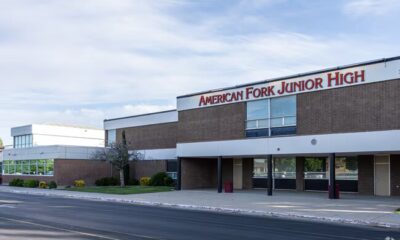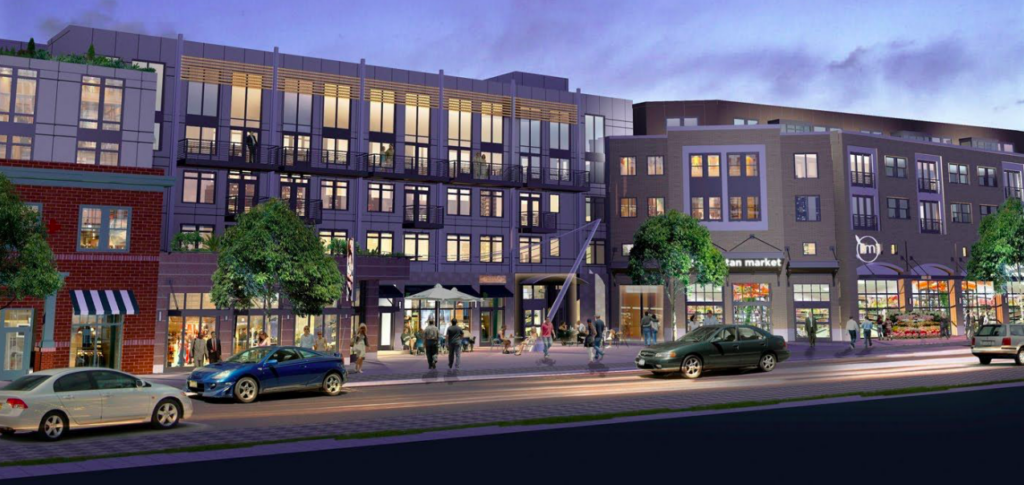Politics & Government
City Council denies Thanksgiving Point proposal, tells developer to bring back a more detailed plan
Published
4 years agoon

The Lehi City Council finally heard the proposal for Thanksgiving Station, a Transit-Oriented Development (TOD) at Thanksgiving Point, at their final meeting for 2021 on Tuesday, Dec. 14.
Development in the Thanksgiving Point area has been on pause over the last few years because City Council directed City staff to reject building applications until Thanksgiving Point developers brought an updated Area Plan for City Council approval. According to the Area Plan, Thanksgiving Point has over-developed office space and significant traffic failures.
Slopes Residential, a company that includes STACK Real Estate, Greer Company and Thanksgiving Point, has been at odds with the City over current and future infrastructure. Both parties have continually disagreed about which entity would finance specific road and utility needs.
In 2020 the developers presented an early concept plan including an additional 5,837 residential units and more office and commercial space. The Council pushed back, citing utility infrastructure concerns, primarily around sewer capacity.
The Area Plan released last month was presented during Tuesday’s meeting and proposed new housing units of slightly less than 5,400, including a range of units from studios to three-bedrooms. The housing would bring an estimated 12,190 additional residents.
The proposal also includes 11-acres of parks and open space, nine acres for a school, 500,000 square feet of office space, 52,000 square feet for a church, and 300 rooms in hotel space on 115 acres at Executive Parkway and Ashton Boulevard. The building would occur in phases over the next 20-25 years.
The proposal also includes several traffic mitigation plans:
• Extension of Clubhouse Drive to 3600 W
• Extension of 3600 W north toward Bluffdale
• Widening Triumph Boulevard to five lanes south of 2100 N
• Widening between Clubhouse Drive and Thanksgiving Way to five lanes
• Adding a third southbound lane between Ashton Boulevard and 2100 N.
The Planning Commission sent the proposal to the City Council with a positive recommendation but also cited many concerns for the Council to review in their approval process.
The City has continually stated that the infrastructure in the area can only support up to 1,000 units, but the development team says they need more to be successful.
“We’ve had the conversation about 1,000 units many times, and we always respectfully decline. We believe it’s not the right thing to do. If we have only 1,000 units, we won’t have enough residents to get a grocer, restaurants, or services. A thousand units means they’ll get in their cars and drive to Harmon’s. The key to a successful TOD is lots of density in a three-mile ring,” Nathan Ricks for STACK told Lehi City Planning Commission on Nov. 18.
During the packed City Council meeting on Dec. 14, citizen comment lasted for over an hour, with a mix of supporters and those speaking in opposition. The majority speaking in favor were executives from Silicon Slopes companies who stressed the need for employee housing, while the opposition was mainly nearby residents concerned with traffic.
“We see this development as a really positive net benefit for the ecosystem and our community. Young companies need access to housing that is accessible and affordable. We think that there is a great benefit to having a development like this in the Silicon Slopes area where people can actually walk their dog in the afternoon, ride their bike to work, and be in a live and work community,” said Arian Lewis, CEO and founder of KILN.
“The traffic in this area is already a failure. We have a huge problem, and it’s been a failure for a number of years, and nobody has come with solutions to fix it.” said resident Rachel Asbury in opposition.
Outside traditional concerns and considerations, this project also puts the Council in a conundrum; what if any role they have in Thanksgiving Points’ survival and success. The 501c3 non-profit organization has said its finances are reeling, and its long-term success depends on a future endowment from development.
Despite the unanimous denial, the City Council expressed openness to a TOD at Thanksgiving Point and asked the developers to bring back a more detailed plan that addresses their key concerns regarding infrastructure, phasing and financing.
The Council’s decision to deny rather than table the proposal means the developer will meet again with City staff to work through the project’s finer details.
“There has been a back-and-forth debate whether Thanksgiving Point should be getting help from the City government. There are many individuals who say ‘no, a business should fail if it can’t stay afloat, and I feel that to my core. However, the momma heartstrings in me say Thanksgiving Point has done a lot for Lehi City and I want to be able to keep that afloat. The red flag I’m seeing here is that only a few of these units are going to be residual income to benefit Thanksgiving Point.” said Councilwoman Katie Koivisto.
“There are a lot of unanswered questions that make me uncomfortable to approve this. I want to make it clear that I’m not opposed to this. If this were to get denied tonight, I want them to come back.” said Councilman Paul Hancock.
“There needs to be a collaboration with staff. There is too big of a gap between what staff is willing to support versus what’s being asked for. That gives me some discomfort there,” continued Hancock.
Councilman Mike Southwick, who has been in opposition to the density since the beginning, reiterated his desire to see the total units significantly brought down.
“I’ve felt all along that this is too many units. Too many for the area and for the people. I hate to even go out to that area. A lot of things need to change. I do think it’s a good place to do a TOD, but with a much smaller number like 1,500 or 2,000 units. This isn’t the only area left to develop in Lehi. I would like to see this brought back with the 2,000 or 1,500 units and possibly help out Thanksgiving Point but not have that many people in the area,” said Southwick.
“We have an asset there with Thanksgiving Point, with the Farm Country and Electric Park and things like that, and I feel this concept plan isn’t utilizing those as best it could. I believe there is a way to do this concept without taking away from as much of those assets. I think there is a way to make this work, but this concept isn’t it,” said Councilman Chris Condie.
“I struggle with the way this has been done. It seems like the starting point was the number of units and how do we fit that in. I think it would be better to look at what would be more appropriate for the area, and we go from there,” added Councilwoman Paige Albrecht.
“Are the TOD requirements being met? No. Go back to the beginning. Is there sufficient infrastructure capacity? Staff is telling me no. Go back to the beginning. Is there a funding mechanism in place? No. Is there a plan in place with UTA for transit options? No. We need to step back. This isn’t sufficiently baked and ready for concept plan to go in. This isn’t something I’m trying to shut down, but these are big concerns that haven’t been addressed yet. I think the conversation should be continued,” said Albrecht.
With the unanimous feeling that the plan needs to be revamped, Councilman Hancock motioned to deny the concept plan and send it back to the drawing board. The denial included the suggestions that the developer bring back a plan somewhere in the range of 1,500 to 2,000 units or provide justification for anything more.
The denial also requested that the next concept include:
-Collaboration with the Utah Transit Authority (UTA) for public transit plans.
-A phasing plan with infrastructure triggers to attain more units throughout the buildout.
-More planning with Alpine School District to gauge the anticipated student enrollment data.
-More solid answers regarding financing the project.
-An overall impact report showing the sales tax and property tax benefit to the City.
The motion to deny passed unanimously.
The developer may now bring back a significantly altered concept plan to go through the process again. The proposal will need to go to DRC (staff) and then back to Planning Commission before being reviewed by the City Council again.

You may like
-


Bliss recognized for accomplishments in softball
-


Lehi Arts presents a joyful rendition of “Joseph”
-


Chick-Fil-A Citizen of the Month: Renita Revill’s lasting impact of service, leadership and strength
-


Lehi Real Estate Snapshot: June 2025
-


The Ruth’s “An American in Paris” an artistic sensation
-


LFP, AFC to host school board “Meet the Candidates” night
-


Lehi Mayor and City Council candidates profiled
-


Lehi’s LDS Tithing Barn to receive next historical marker
-


Denver Broncos’ Bolles serves local youth with free football camp
-


Lehi woman crowned Miss Utah 2025


